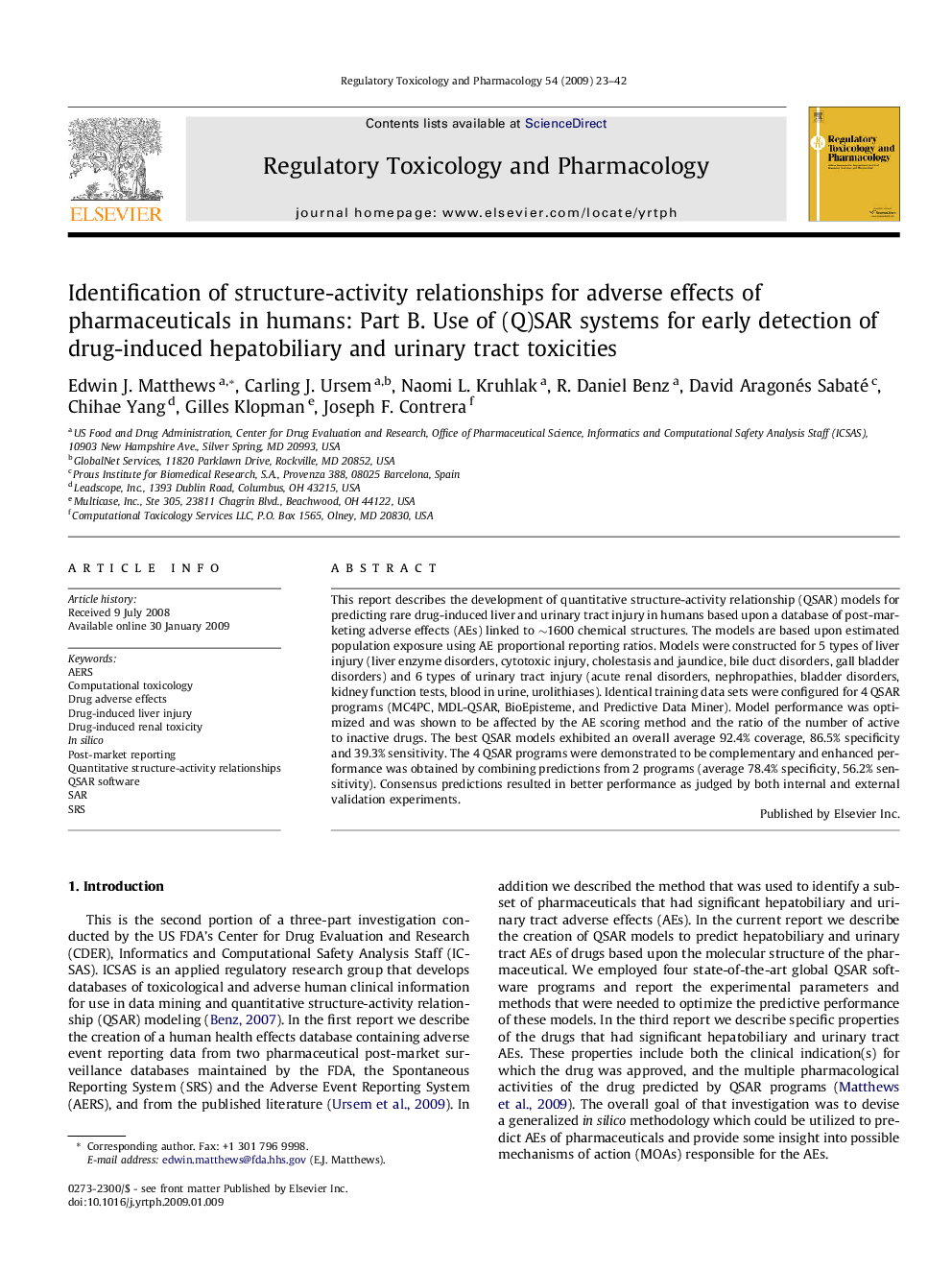| Article ID | Journal | Published Year | Pages | File Type |
|---|---|---|---|---|
| 2592616 | Regulatory Toxicology and Pharmacology | 2009 | 20 Pages |
This report describes the development of quantitative structure-activity relationship (QSAR) models for predicting rare drug-induced liver and urinary tract injury in humans based upon a database of post-marketing adverse effects (AEs) linked to ∼1600 chemical structures. The models are based upon estimated population exposure using AE proportional reporting ratios. Models were constructed for 5 types of liver injury (liver enzyme disorders, cytotoxic injury, cholestasis and jaundice, bile duct disorders, gall bladder disorders) and 6 types of urinary tract injury (acute renal disorders, nephropathies, bladder disorders, kidney function tests, blood in urine, urolithiases). Identical training data sets were configured for 4 QSAR programs (MC4PC, MDL-QSAR, BioEpisteme, and Predictive Data Miner). Model performance was optimized and was shown to be affected by the AE scoring method and the ratio of the number of active to inactive drugs. The best QSAR models exhibited an overall average 92.4% coverage, 86.5% specificity and 39.3% sensitivity. The 4 QSAR programs were demonstrated to be complementary and enhanced performance was obtained by combining predictions from 2 programs (average 78.4% specificity, 56.2% sensitivity). Consensus predictions resulted in better performance as judged by both internal and external validation experiments.
